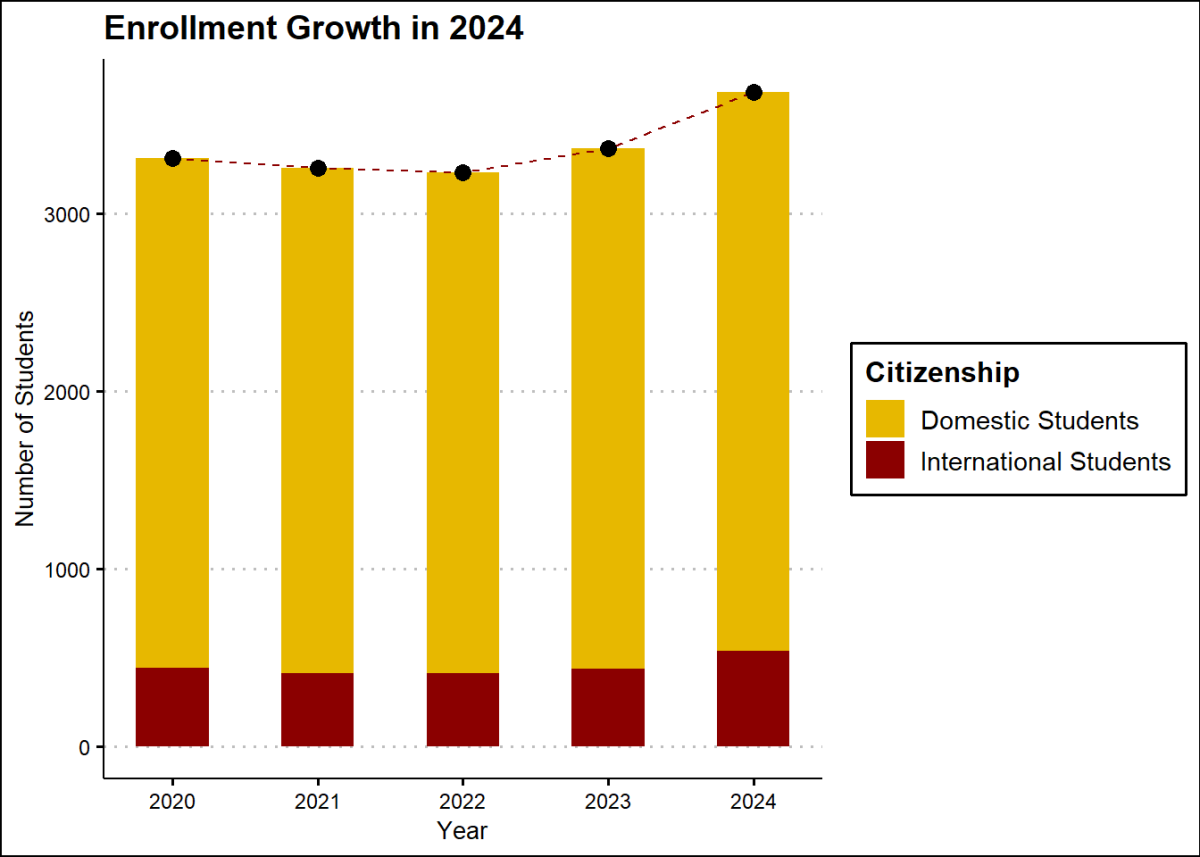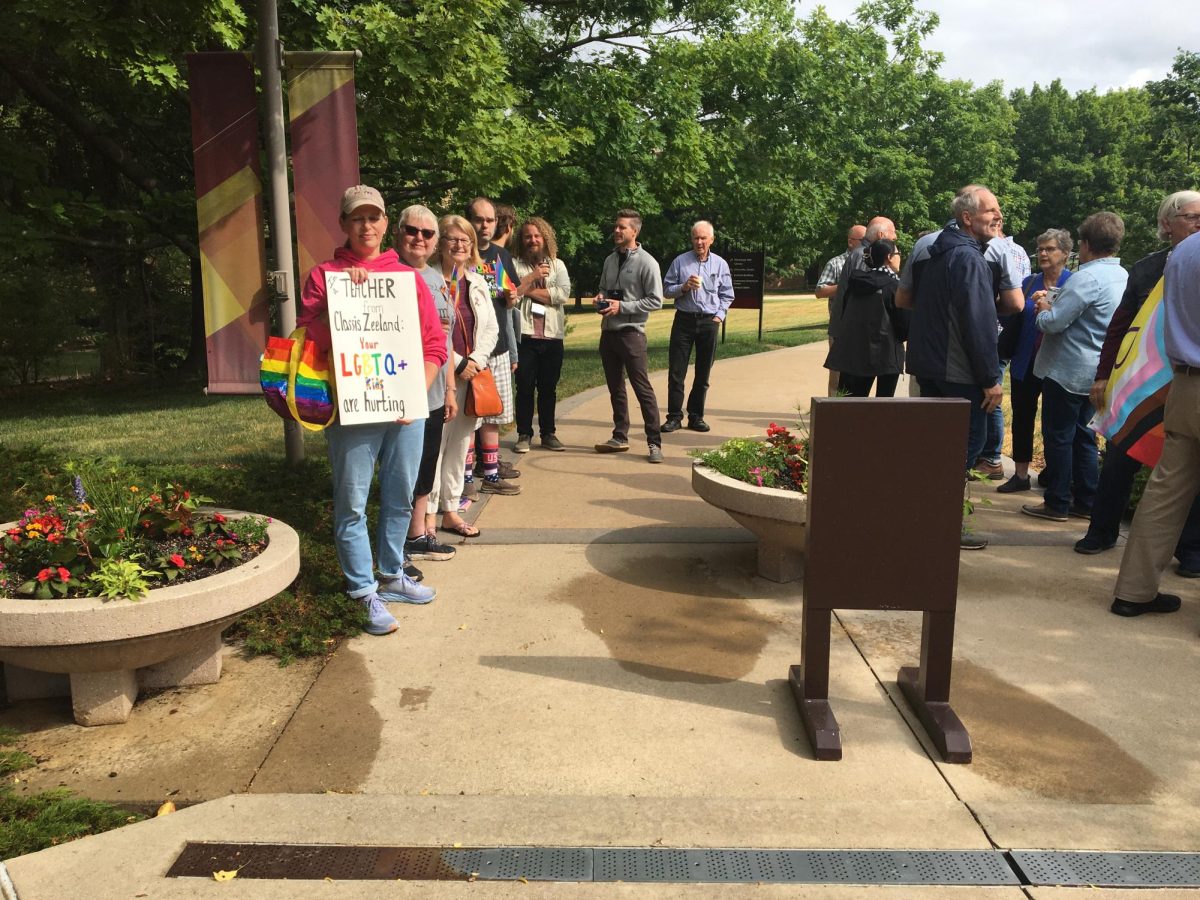According to newly released Day 10 census data, Calvin’s total student body grew to 3,681 students, continuing its growth for a second consecutive year — up over 300 students from the same time in 2023. This growth was not driven by a large jump in any major demographic, but rather by continued small gains among a number of target groups.
The Day 10 census report is Calvin’s main annual metric for tracking key changes in the population and the demographics of the student body. It measures how many students are enrolled on the tenth day of the semester, which helps account for students who make their enrollment deposit but choose not to attend in the fall.
“There is no one strategy, student type, location or reason for this year’s growth,” Lauren Jensen, vice president for enrollment strategy, told Chimes in an email statement. In 2022, Jensen told Chimes reporters that growth in international and BIPOC populations, as well as in students from outside of Michigan, have been “bright spots for our long-term planning.” Since 2023, the proportion of students with international citizenship rose by 1.2%, hitting 14% of the total student body. Overall, 30.1% (365 students) of the incoming class are BIPOC students.
Out of this year’s 1,195 new students, 886 (71.9%) are traditional FTIAC (first time in any college) undergraduate students. The remainder of the incoming class is made up of 86 transfer students, 130 nontraditional undergraduates, and 93 graduate students. The non-traditional undergraduate population includes dual-enrolled, post-baccalaureate and non-degree seeking undergraduates, as well as students obtaining a certificate through the Life and Career Studies program.
The most notable area of growth is a return to pre-COVID numbers in traditionally high-yield areas. High-yield demographics, like children of alumni, are likely to apply to Calvin and to eventually deposit and enroll. Alumni children bounced back from last year’s low, and there was growth among students from Michigan and CRC-affiliated students as well.
Part of the growth is likely driven by new financial aid policies. Since 2022, Calvin has offered a “Visit Grant” for students who attend an official Calvin-sponsored campus visit. Initially, this grant was for $1000 per year, and then it was increased to $2000 annually. According to James Koeman, director of Financial Aid, prospective students who attend an on-campus visit are much more likely to eventually commit to Calvin. Financial Aid created the visit grants to “encourage and promote” prospective student visits.
Financial Impacts
The increase in enrollment across the board is likely to be beneficial for the university budget. Non-traditional and graduate students, a growing demographic in recent years, help boost Calvin’s bottom line. Koeman told Chimes that Calvin operates its graduate programs using a “low cost, low/no aid” philosophy. According to publicly available financial reports, student tuition and fees were the single largest income stream in Calvin’s annual operating budget in 2023.
Additionally, the large freshman class means more on-campus students, who pay room and board costs alongside tuition. Jay Wise, director of housing and operations, told Chimes that the student life department is now able to use more of its extant housing, some of which had previously been sitting vacant (such as Rooks-Van Dellen hall, now an upper-class living space).
However, it will likely be some time before the financial impact of the new class is felt across campus more broadly.
Dirk Pruis, Calvin’s chief financial officer, told Chimes in an email statement that enrollment of approximately 980 new undergraduate students is a “helpful benchmark” for Calvin’s financial stability going forward.
“While class size is important, we are also exploring other strategies to strengthen our financial position and reduce our reliance on enrollment alone,” Pruis told Chimes.
The full report, including more data from 2024 and previous years, can be found on Calvin’s website.






